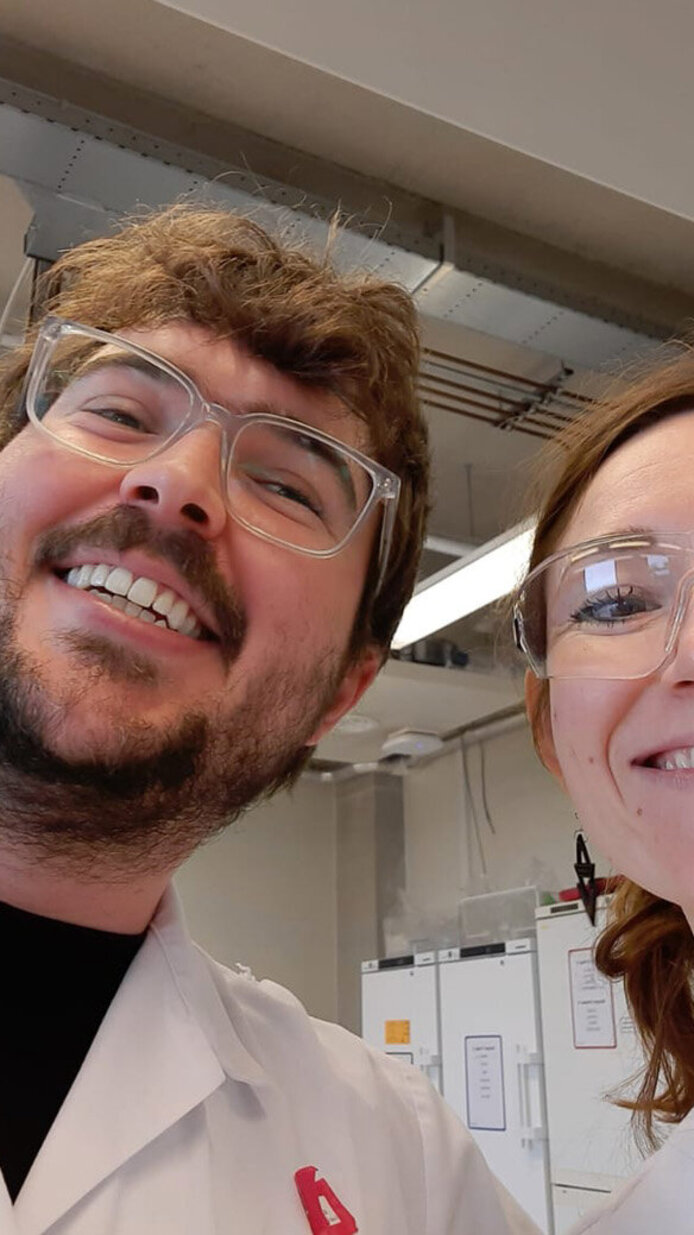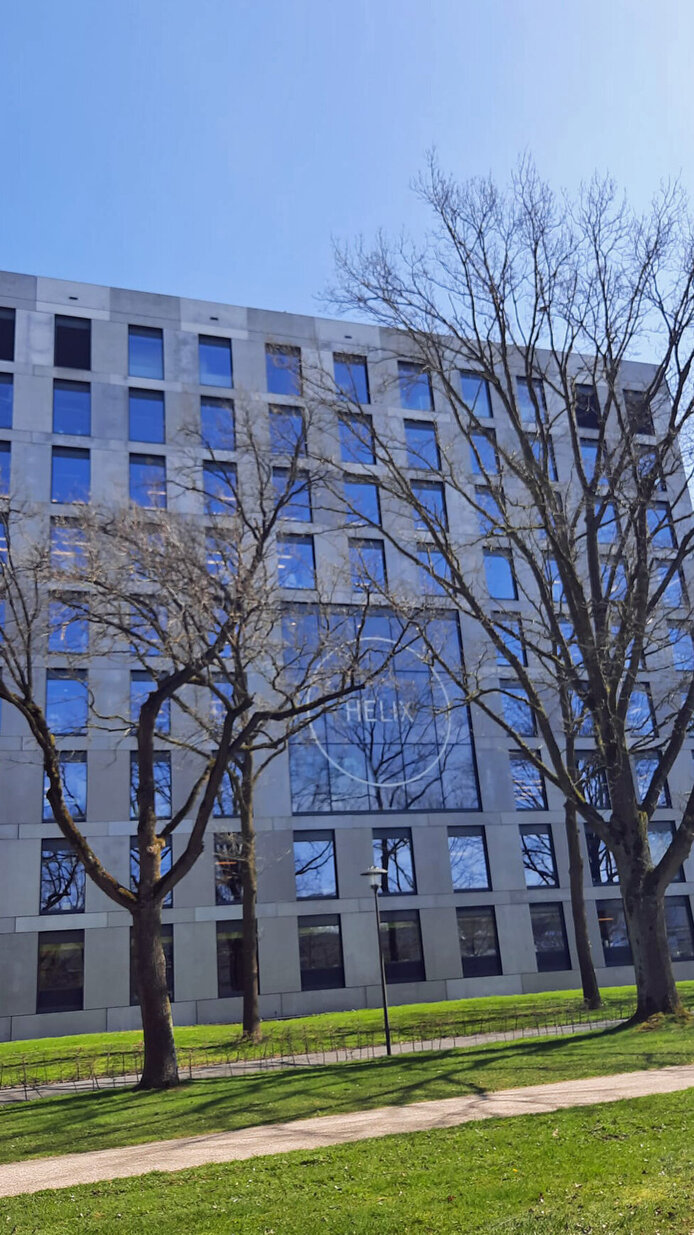Archaea research in the “Helix”

I am a microbiologist and my research focuses on so-called Argonaute enzymes, which are found in prokaryotes (bacteria and archaea) and eukaryotes, including humans. Not unlike the CRISPR-Cas9 gene scissors, these enzymes can cut complementary target DNA or RNA with the help of so-called “guides”, which are small pieces of DNA or RNA. In multicellular eukaryotes, Argonauts play an important role in RNA interference (RNAi) in order to defend the organism against viruses and regulate gene expression. In unicellular prokaryotes, on the other hand, their significance is still largely unknown. In the context of my Schrödinger fellowship in Wageningen (The Netherlands), I am characterizing Argonaute enzymes in archaea and investigating their biological function. Given that archaea are considered to be the ancestors of the first eukaryotic cells and thus precede the development of plants, animals and humans, the results of my research may also furnish important insights into the evolution of Argonaute enzymes.
During my doctoral studies I was already intensively looking into the prokaryotic immune system CRISPR-Cas. It had become a hot topic, and many international research groups were already working in this field. Christa Schleper, my PhD supervisor and the only CRISPR-Cas researcher in Austria at the time, encouraged me to attend as many relevant conferences as possible to network with other researchers. This early exchange with international working groups made a Postdoc abroad attractive to me. In order to deepen my knowledge in the field of the prokaryotic immune system, I decided to spend my postdoc in the working group of the Dutch microbiologist John van der Oost, who is considered a luminary in the field.
Different country – new perspectives
Conducting research in another country has proved to have a very significant impact on me. For instance, here in Wageningen I am working with colleagues who are doing applied research, a field previously completely unknown to me. While my heart belongs to basic research, this cooperation helps me gain new perspectives that will certainly have a bearing on my future research. Unlike the University of Vienna, Wageningen University has a central campus. The buildings have resounding names such as “Aurora”, “Atlas” or “Helix”. Our research group is located in the Helix building and the atmosphere on campus is fantastic. There is always a lot going on and you always meet colleagues you know.
Since coming to Wageningen, I’ve also learned a new approach to effective time management. Short meetings, which are the standard here, often turn out to be more efficient than lengthy ones, and project planning is quickly followed by implementation. In addition, the working group is very open to adopting new techniques and equipment in order to find the best way of research. The atmosphere is inspirational, and I will definitely take my improved planning and implementation skills home with me.
The weather app is a must-have
In contrast to Austria, here it is largely the weather that dictates the start and end of the working day. Since everyone rides their bike to university here, they use a weather app to choose the time with the least likelihood of rain for the ride. On the somewhat rare days when the sun is shining, people like to finish a little earlier in order to recharge on vitamin D and maybe even have a “biertje” outside. People here are pragmatic and while their sense of humor is not exactly delicate, it’s still friendly. After one and a half years, I already feel very much at home here and have also made one or two friends for life. Even with the weather I have made friends with in the meantime.









